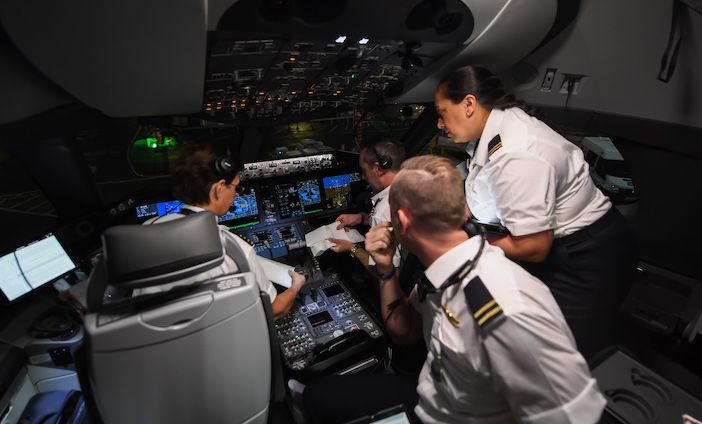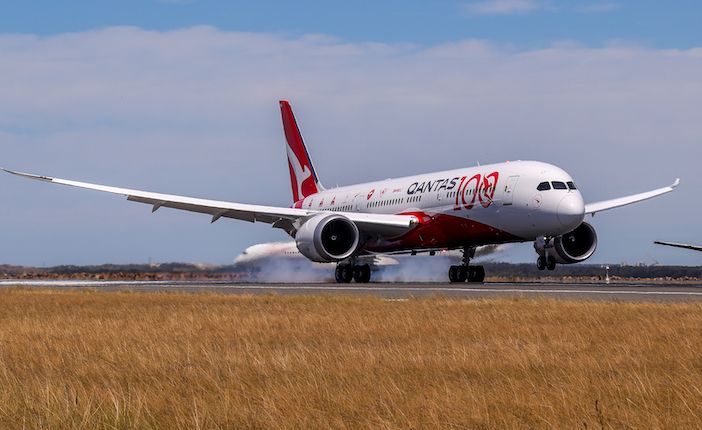Australian airline Qantas’s second of three research flights into jet lag and crew behavior landed in Sydney yesterday after travelling from London non-stop in 19 hours and 19 minutes.
The Boeing 787 Dreamliner, registration VH ZNJ and named Longreach, reduced travel time by two hours compared with current one-stop services from the east coast of Australia. Qantas aims to run non-stop flights from Sydney to London and New York from 2023 but is first investigating ways of improving crew and passenger well-being on what it calls “ultra” long haul services before making a decision on the new route by the end of the year.
The flight is only the second time any commercial airline has flown this route non-stop, after Qantas flew a near-empty 747-400 in 1989. This week’s flight carried 49 passengers and crew and used around half the amout of fuel – upon landing there was approximately 6300kg which translates to about 1 hour 45 minutes of flight time
The flight flew across 11 countries including England, Netherlands, Germany, Poland, Belarus, Russia, Kazakhstan, China, Philippines and Indonesia before crossing the Australian coast near Darwin, tracking south east across Australia towards Sydney.
The airline has re-purposed the delivery flights of three brand new 787 Dreamliner aircraft for the research project, which it has called “Project Sunrise”. Last month it ran a New York to Sydney service and next month that route will be repeated for the final research flight.

Researchers from the University of Sydney’s Charles Perkins Centre as well as the Cooperative Research Centre for Alertness, Safety and Productivity (Alertness CRC) are traveling on the flights to collect passenger and crew data.
Professor Corinne Caillaud from the Charles Perkins Centre said that data from all three flights will be used for the analysis. He said, “We are hopeful that the interventions and strategies we tried on the first research flight helped passengers better manage the challenges of crossing multiple time zones. From a research point of view, it was something quite novel.
“The second flight involved passengers eating supper at breakfast time, with the aim of encouraging them to sleep at 10am in the morning London time to help avoid light and reset their body clock to Sydney time.”
Cabin lighting and temperature, stretching and meditation will also play key roles in the research.





